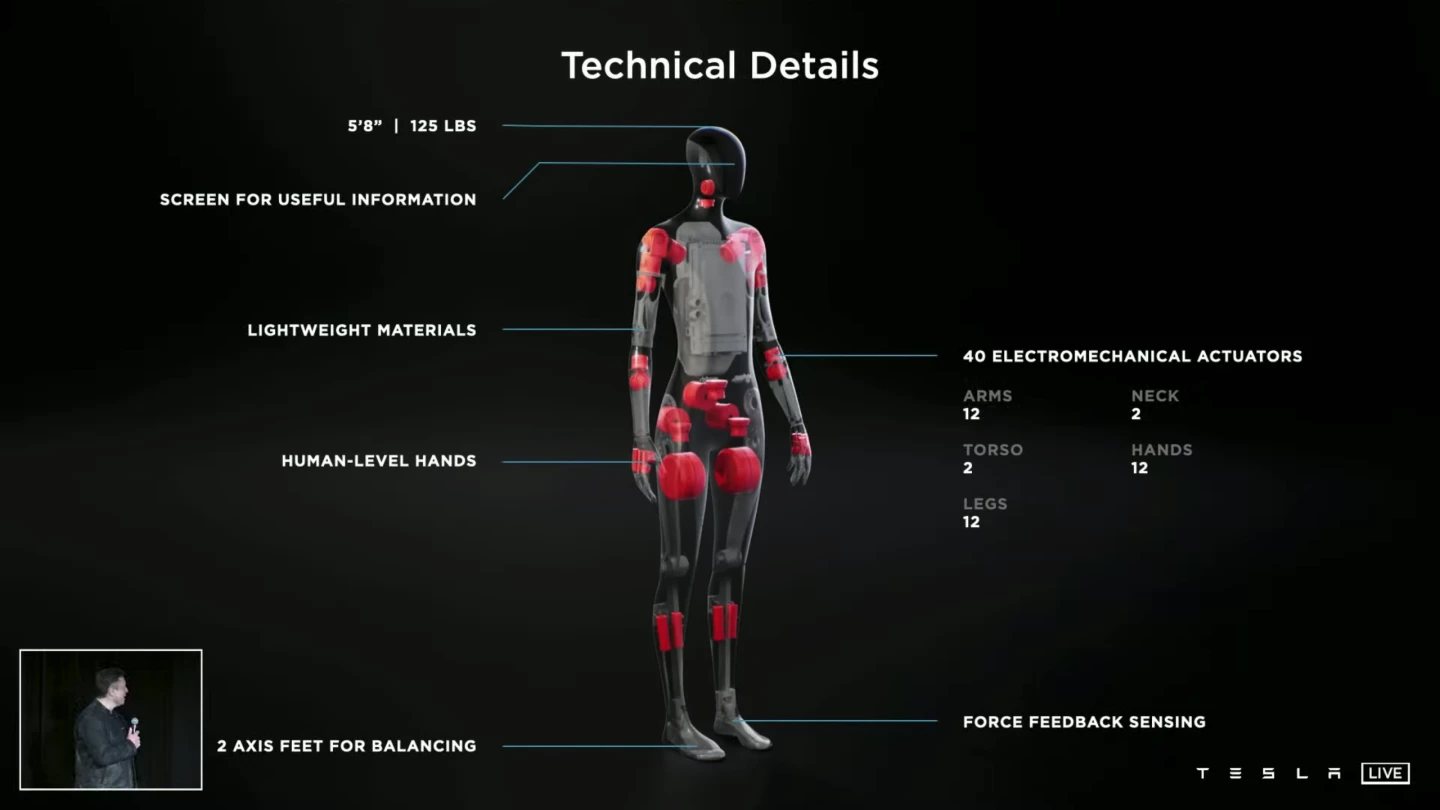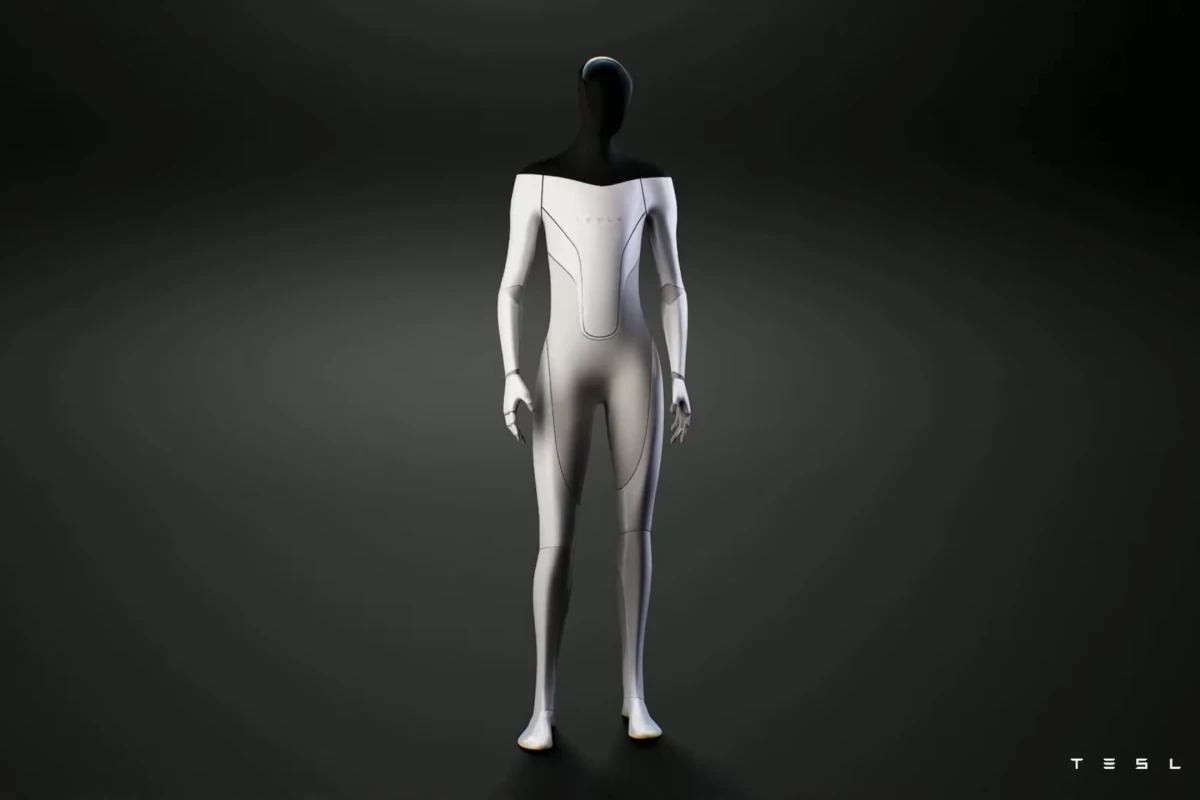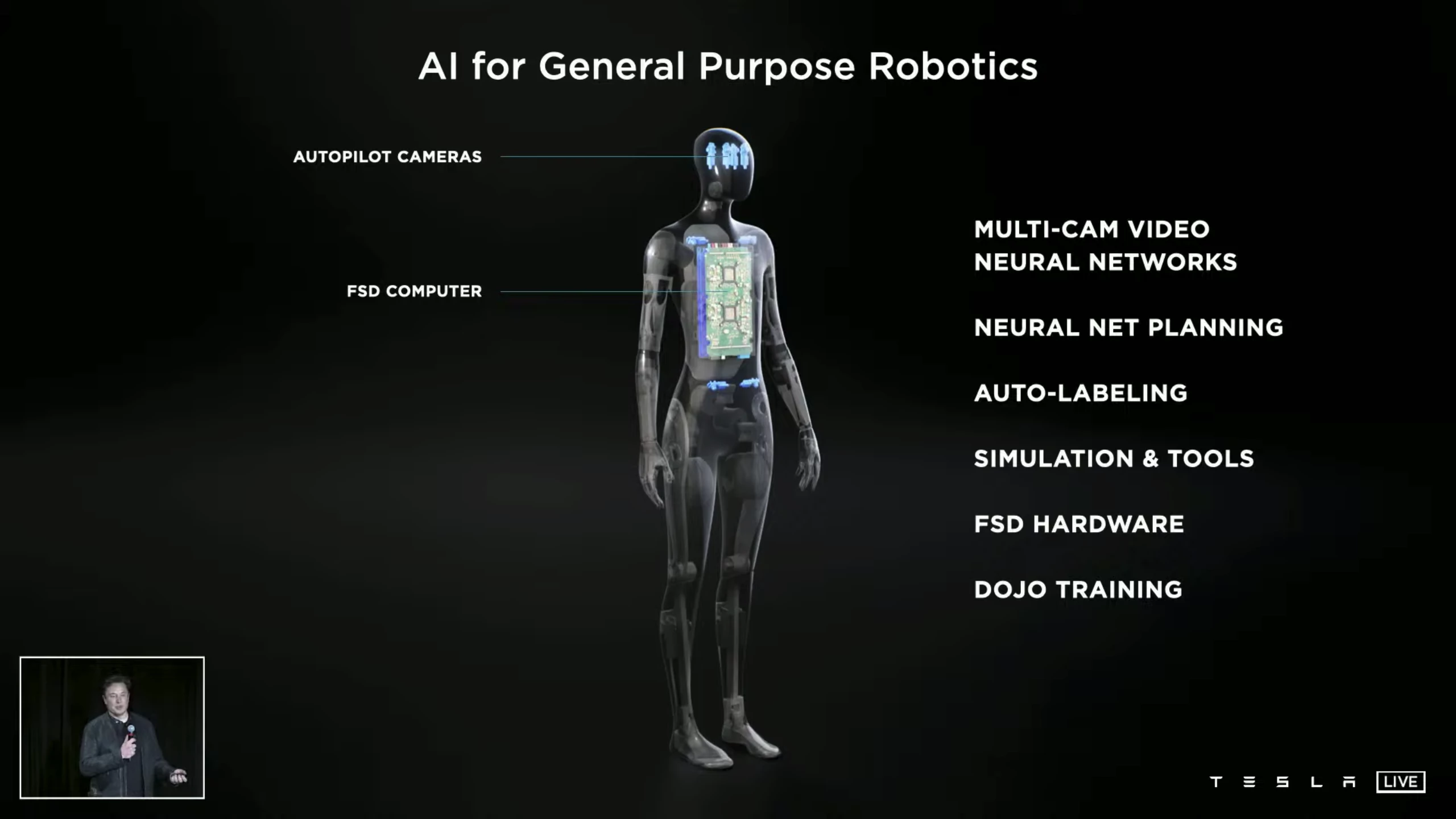At Tesla's AI Day presentation, Elon Musk has revealed that the company is working on its own AI-driven humanoid robot. According to Musk, the Tesla Bot is designed to "navigate through a world built for humans, and eliminate dangerous, repetitive, boring tasks."
The Tesla Bot will be around 5 ft 8 in (173 cm) tall, weigh around 125 lb (57 kg), and will have a screen for a face, allowing it to display useful information. It'll have a top speed around 5 mph (8 km/h), and be capable of carrying loads up to 45 lb (20 kg), deadlifting as much as 150 lb (68 kg) or holding a 10-lb (4.5-kg) weight with its arms extended.
It'll perceive the world through eight cameras and a Full Self Driving computer. Through 40 electromechanical actuators, it promises to be able to get around in spaces that aren't designed for robots, and its "human-level hands" and force-feedback sensing of the world around it promise to make it useful in a wide variety of typically human jobs.
Obviously, when you start talking about building humanoid robots, you're going up against a well-established giant in the field: Honda's Asimo. OK, maybe not. But there's also been a thing or two going on over at Boston Dynamics, now owned by Hyundai. So why does Tesla think it's got what it takes to disrupt a market that hasn't really even opened up yet?

The answer is twofold. Firstly, says Musk, Tesla already operates a huge fleet of intelligent robots trained to see the world, label things meaningfully, understand spoken-language requests and decide on autonomous courses of action toward a requested goal.
"Our cars are semi-sentient robots on wheels," he said. "The Full Self Driving computer, essentially the inference engine on the car, which we'll keep evolving, obviously, and Dojo, and all the neural nets, recognizing the world, understanding how to navigate the world ... It kinda makes sense to put that onto a humanoid form."
Secondly, Tesla has gone through a lot of pain to get good at manufacturing complex products capable of meeting strict automotive quality standards.
"We're also quite good at sensors and actuators and batteries," said Musk, "so we think we'll probably have a prototype sometime next year that basically looks like this."
Tesla sees this as a general-purpose robot, rather than one that's built for specific tasks; hence the humanoid form factor. In a world designed by humans, for humans, a humanoid bot will be able to get around more easily than anything on wheels or tracks, use existing tools, and potentially take over a broad range of jobs currently performed by people.
"Can it navigate through the world without being explicitly trained, with line by line instructions," asked Musk. "Can you talk to it, and say, 'please pick up that bolt and attach it to the car with that wrench.' It should be able to do that. You should be able to say, 'please go to the store and get me the following groceries.' That kind of thing. Yeah, I think we can do that."

Musk, a famous proponent of the view that generalized artificial intelligence poses an enormous threat to human safety, said the Tesla Bot would not have that kind of intelligence, and would be focused simply toward automating boring, dangerous and repetitive tasks. Its diminutive, relatively slow form factor is also no mistake. "At a mechanical, physical level," said Musk, "you can run away from it, and most likely overpower it. So hopefully that doesn't ever happen, but you never know. Five miles an hour, if you can run faster than that, you'll be fine."
The idea of deploying a robot workforce clearly appealed to Musk; presumably Tesla Bots will not be capable of unionizing. But the announcement did have him waxing a little philosophical.
"This is quite profound," he said. "What is the economy? At the foundation, it is labor. What happens when there is no shortage of labor? This is why I think that long-term, there will need to be a universal basic income. But not right now, because this robot doesn't work. We'll need a minute! Essentially in the future, physical work will be a choice. If you want to do it, you can. But you don't need to do it. It has profound implications for the economy, because given that the economy, at its foundational level, is labor, and capital is just distilled labor, then is there any actual limit to the economy? Maybe not."
An infinitely-expanding economy; there's a frightening thought. Musk wouldn't be drawn on the company's plans for commercialization, saying only that we should see a prototype in around a year.

Another wild claim, indeed, from one of the wildest claimers in the technology world. Tesla already has its hands full right now getting its cars to operate effectively in the relatively rules-based environment of road traffic. The world of general human labor is much more diverse; it'll require many times more neural-net training for the Tesla Bot to become useful in a broad range of scenarios.
And here, while the company clearly has some of the world's best hardware to point at the problem, it does lose a key asset that has kept it out in front of the market on self-driving: the fleet. One of the company's biggest advantages to date has been the amount of data it's constantly gathering through the huge number of Tesla cars on the road kitted out with cameras and sensors, phoning home to add new edge cases and solutions to the global database.
But it does have money and top minds to throw at the Tesla Bot, so while on one hand it looks like one of the zaniest moonshots in Musk's bulging portfolio, we also wouldn't be surprised to look at this space in 2025 and find Tesla making a significant contribution.
You can watch the entire AI Day presentation below. Skip to 2:05:24 to meet the Tesla Bot.
Source: Tesla








